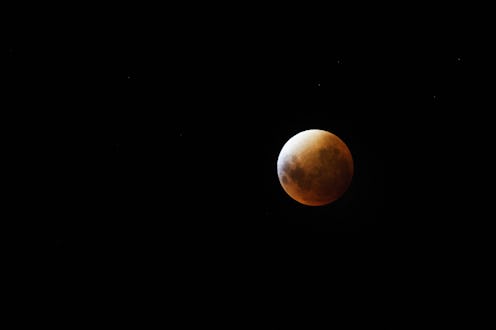You've likely caught wind by now of the fact that a rare planetary alignment is upon us. But if your attention span is comparable to mine when listening to the news, you may have missed some important details and been left wondering, "Uh, when will the planets align, exactly?" So in case you don't want to miss this incredibly cool celestial event, I've got all the pertinent info for your stargazing — or rather planet-gazing, as the case may be — needs.
Before we go any further, though, let's take a moment to address the common (well, at least in certain circles on the Internet) misconception that a planetary alignment of this magnitude could affect weather, gravity and even continental movement. Alas, despite what many major sci-fi blockbusters would have you believe, this type of planetary alignment has no bearing on the Earth. Philip C. Plait over at Bad Astronomy explains the normality of this phenomenon pretty succinctly, saying, "Since all the planets orbit the Sun within a given period, at some point they must all line up. For example, the Earth takes one year to go around the Sun, while Mars takes about two. That means that every two years, Mars and Earth will line up with the Sun. The more planets you want to align, however, the longer it takes for all of them to line up." It's also worth noting that because the planets operate on different planes of orbit, they never actually form a tidy line like you might see in movies. It's more of a slapdash line which only appears straight due to perspective and position.
This brings us to the present. So read on for the details about the current alignment, as well as future celestial alignments you might want to mark on your calendar now.
1. Jan. 20, 2016
Yep, there's a planetary alignment happening at this very moment! As of early this morning, Mercury, Venus, Mars, Jupiter, and Saturn have synced up their planetary cycles and will be visible to the naked eye. But if you failed to wake up at the crack of dawn to see this spectacle, go ahead and set your coffee pot to auto-brew for tomorrow morning — these five bright planets will continue to be visible when Mercury rises (before dawn) through Feb. 20.
2. Aug. 13, 2016
This is super cool stuff, eh? When's the next one, eh? Hold your celestial horses; I'm getting to that. So, as rare as planetary alignments like this are — the last similar line-up occurred between Dec. 15, 2004 and Jan. 15, 2005 — we may get a two-fer this year. According to EarthSky.org, it may be possible to see the same five planets aligned in the evening sky beginning Aug. 13 and lasting roughly a week. However, since Mercury and Venus will be sitting low in this future alignment, it will be far easier to be spot if you happen to live in the Southern Hemisphere. Womp, womp.
3. Sept. 8, 2040
This is doable, right? I'll only be in my fifties, so I'm definitely game for peering into the same general part of the sky to see the old school crew of Jupiter, Saturn, Mars, Venus, and Mercury chilling together once again. It's basically the celestial equivalent of the Backstreet Boys comeback. How could you pass it up when I put it that way? Mark your calendars for the planetary reunion tour, people.
4. May 6, 2492
Well, my old ass would be 509 if I lived to see the day astronomers theorize could be the closest that all of the planets come to being aligned. In other words, this once-in-a-lifetime phenomenon won't occur in my lifetime or your lifetime. Unless, of course, scientist finally nail down that whole cryogenically freezing and reanimating people shtick. And since you should never say never, I'm including it here. Future you can thank future me, you know, in the future.
Images: Giphy (5)
